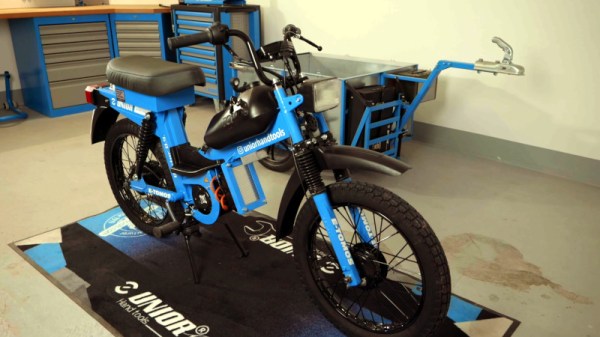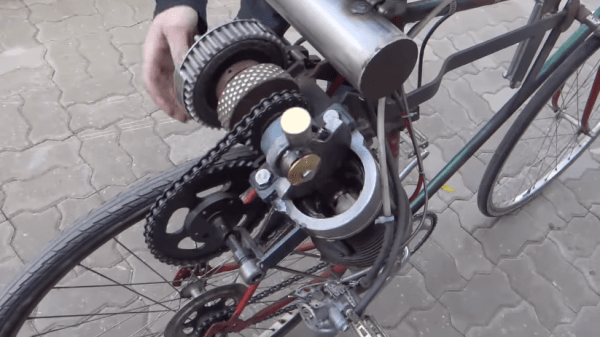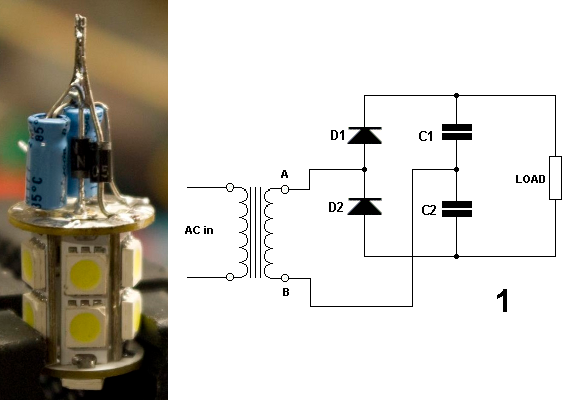The TOMOS 50cc moped, a small motorcycle produced in Yugoslavia and the Netherlands, has for decades been a common sight on European roads and provided the first taste of transport independence for countless youngsters. Unfortunately the company went bankrupt a few years ago, but there are still plenty of them about, and it’s one of these that [Doctor D.S.] gives an electric conversion in the video below the break.
The electronics are a standard 5 kW off-the-shelf Chinese kit, but in this they aren’t the star of the show so much as the work on the bike. As with any old moped it’s a bit ropey, and he strips it down and reconditions every part of it alongside his work fabricating brackets, a battery box, and a seat. It’s a long video, but it’s one of those workshop sequences that you can become engrossed in.
The result appears to be a very practical, powerful (for a moped) and rideable bike, and it’s one we’d have for buzzing around town any day. We’d like to take a look at that battery box and seat combo on the interests of safety, but otherwise it’s pretty spot-on. Sit back and enjoy a bit of quality workshop video!
If you’re hungry for more, this is by no means the first road bike electric conversion we’ve brought you.

















